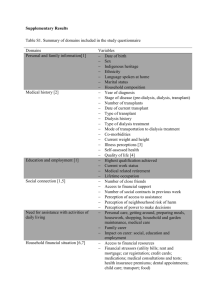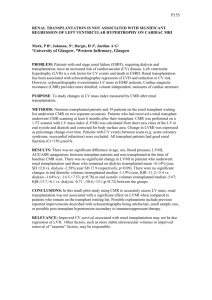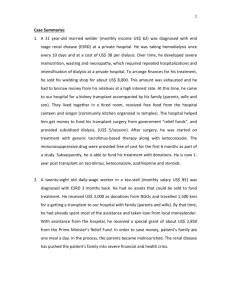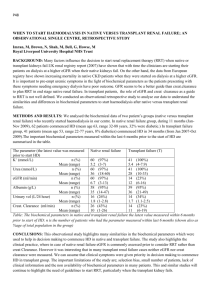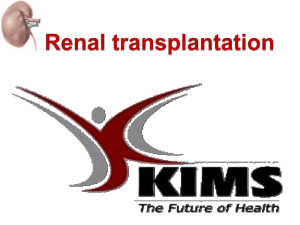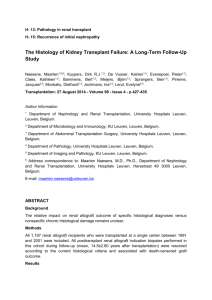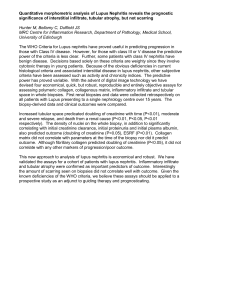Survival after renal transplant failure in the UK:
advertisement
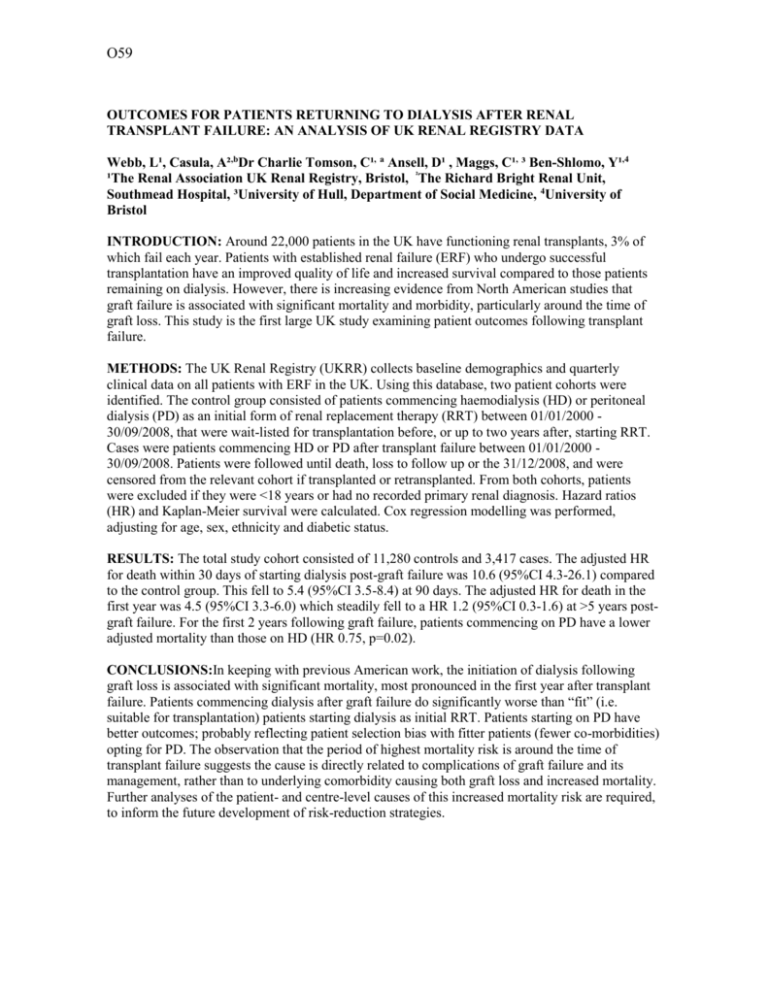
O59 OUTCOMES FOR PATIENTS RETURNING TO DIALYSIS AFTER RENAL TRANSPLANT FAILURE: AN ANALYSIS OF UK RENAL REGISTRY DATA Webb, L¹, Casula, A²,bDr Charlie Tomson, C¹, a Ansell, D¹ , Maggs, C¹, ³ Ben-Shlomo, Y¹,4 ¹The Renal Association UK Renal Registry, Bristol, ²The Richard Bright Renal Unit, Southmead Hospital, ³University of Hull, Department of Social Medicine, 4University of Bristol INTRODUCTION: Around 22,000 patients in the UK have functioning renal transplants, 3% of which fail each year. Patients with established renal failure (ERF) who undergo successful transplantation have an improved quality of life and increased survival compared to those patients remaining on dialysis. However, there is increasing evidence from North American studies that graft failure is associated with significant mortality and morbidity, particularly around the time of graft loss. This study is the first large UK study examining patient outcomes following transplant failure. METHODS: The UK Renal Registry (UKRR) collects baseline demographics and quarterly clinical data on all patients with ERF in the UK. Using this database, two patient cohorts were identified. The control group consisted of patients commencing haemodialysis (HD) or peritoneal dialysis (PD) as an initial form of renal replacement therapy (RRT) between 01/01/2000 30/09/2008, that were wait-listed for transplantation before, or up to two years after, starting RRT. Cases were patients commencing HD or PD after transplant failure between 01/01/2000 30/09/2008. Patients were followed until death, loss to follow up or the 31/12/2008, and were censored from the relevant cohort if transplanted or retransplanted. From both cohorts, patients were excluded if they were <18 years or had no recorded primary renal diagnosis. Hazard ratios (HR) and Kaplan-Meier survival were calculated. Cox regression modelling was performed, adjusting for age, sex, ethnicity and diabetic status. RESULTS: The total study cohort consisted of 11,280 controls and 3,417 cases. The adjusted HR for death within 30 days of starting dialysis post-graft failure was 10.6 (95%CI 4.3-26.1) compared to the control group. This fell to 5.4 (95%CI 3.5-8.4) at 90 days. The adjusted HR for death in the first year was 4.5 (95%CI 3.3-6.0) which steadily fell to a HR 1.2 (95%CI 0.3-1.6) at >5 years postgraft failure. For the first 2 years following graft failure, patients commencing on PD have a lower adjusted mortality than those on HD (HR 0.75, p=0.02). CONCLUSIONS:In keeping with previous American work, the initiation of dialysis following graft loss is associated with significant mortality, most pronounced in the first year after transplant failure. Patients commencing dialysis after graft failure do significantly worse than “fit” (i.e. suitable for transplantation) patients starting dialysis as initial RRT. Patients starting on PD have better outcomes; probably reflecting patient selection bias with fitter patients (fewer co-morbidities) opting for PD. The observation that the period of highest mortality risk is around the time of transplant failure suggests the cause is directly related to complications of graft failure and its management, rather than to underlying comorbidity causing both graft loss and increased mortality. Further analyses of the patient- and centre-level causes of this increased mortality risk are required, to inform the future development of risk-reduction strategies.





